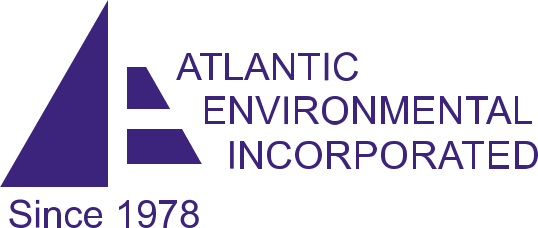If you need an evaluation of worker exposure to hexavalent chromium (hex chrome) discussed in this article call us at 973-366-4660 or email us at info@atlenv.com for details and a free estimate.
February 6, 2020

Where is Hexavalent Chromium (Hex Chrome) Found?
Hexavalent Chromium (also known as Chrome 6, Chrome VI, or hex chrome) is a component of a variety of metal products. It is most often found in stainless steel where it greatly reduces corrosion. Hex chrome is also found in some steel alloys because of its ability to increase flexibility and reduce corrosion. Electroplating of chrome also can form Hexavalent Chromium, such as in chrome plating of vehicle parts.
Hex Chrome is also found in some paints. Specifically, in heavy-duty yellow paints. Often referred to as Chrome Yellow. It is also in Chrome Plating as you may suspect.
When metals containing chrome are heated to a melting point such as in welding, torch cutting, and plasma cutting tables, the metal forms a visible fume or smoke containing each metal, including Hexavalent Chromium which can be inhaled by welders and nearby personnel.
Does Hexavalent Chromium Cause Cancer?
According to NIOSH, Hexavalent Chromium is well-established as a carcinogen associated with lung, nasal, and sinus cancer. The National Institutes of Health reports unequivocally that Chromium hexavalent (VI) compounds are known to cause cancer in humans based on sufficient evidence of carcinogenicity from studies in humans. The primary reason is that Chrome 6 (Cr+6) is very unstable and reacts with available substance such as human tissue.
OSHA recognized that inhaling metal fume containing Hexavalent Chromium could cause cancer in welders and instituted three standards to control exposure based on type of industry – 29 CFR 1910.1026 (General Industry) 29 CFR 1915.1026 (Shipyards) and 29 CFR 1926.1126 (Construction). The specific regulations can be found on OSHA’s website: www.osha.gov.
How Do I Know If I’m At Risk?
By conducting air monitoring or testing for hexavalent chromium. The OSHA standard requires initial worker monitoring of any process where there is a potential for exposure to Hexavalent Chromium. Exceeding the permissible exposure limit (PEL) of 5.0 ug/M3 or exceedance of the 2.5 ug/M3 Action Level always requires follow-up monitoring at prescribed time limits and implementation of exposure controls. The Hex Chrome Standard requires follow-up monitoring anytime the PEL is exceeded (3 months) and the Action Level is exceeded (6 months) until such time as 2 consecutive samplings are below the Action Level of 2.5 ug/M3.
From our experience conducting air monitoring during a variety of metal processes, we have found it is relatively common for workers to exceed the OSHA PEL of 5 ug/M3 for hex chrome during an 8-hour shift, particularly in welding.
Of course, welding on stainless steel has been the most likely situation where a worker’s exposure to Hexavalent Chromium may exceed the PEL. To a lesser degree, we have found exceedances of the PEL for Hexavalent Chromium in electroplating and paint or pigment manufacturing.
OSHA states that over 558,000 welders in the United States are potentially exposed to Hex Chrome.
In addition to air monitoring requirements, the OSHA Hexavalent Chromium standards 29 CFR 1910.1026 (General Industry), 29 CFR 1915.1026 (Shipyards), and 29 CFR 1926.1126 (Construction) have requirements for training, personal protection, regulated work areas, control measures, medical requirements, and recordkeeping.
Written by Robert E. Sheriff, CIH, CSP
Robert E. Sheriff is the CEO of Atlantic Environmental. A Certified Industrial Hygienist and Certified Safety Specialist, he has over thirty years of experience providing human health hazard assessments and ventilation design in industrial settings.
For more information and a free proposal, contact Robert at 973-366-4660, email at info@atlenv.com or fill out our online form for more details or a quote.
Our primary service areas for Hex Chrome (CrVI) sampling/testing are NJ, NY, NYC, PA, CT, DE, (Boston) MA, RI, Wash DC, WI, MD, MI, (Chicago) IL, VA, IN, (Atlanta) GA, AL, NC, SC, TN, (Dallas, Ft Worth) TX, OK, DC, AR. We can service most other areas of the U.S. but with some added travel charges.



